Should You Replace or Rejuvenate Your Plants?
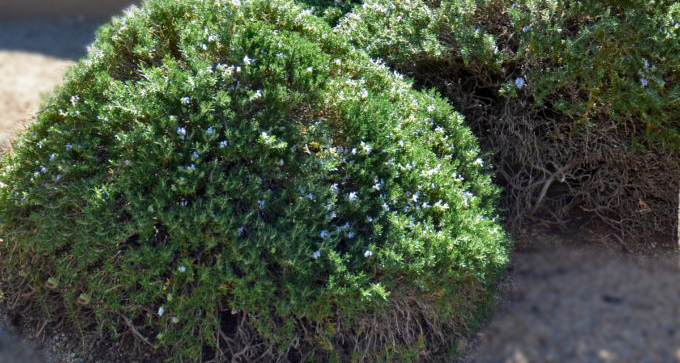 Mature, woody Rosemary shrub – Detracts from look of a property. See prognosis at the bottom* |
How to know when you should replace your plants
How do your plants look? Are they attractive, healthy and vigorous? There are a few factors that deterrmine how they look.
- Your plant’s maturity. Are they in the beginning or end of their lifecycle?
- Are they planted in the right place? This will determine how well they thrive.
- Maintenance is important. But maintenance cannot compensate for plants that are past their prime or are planted in the wrong place. We have seen numerous examples of plants in the wrong place that, in spite of diligent management, will never thrive.
Knowing Your Plant’s Useful Lifecycle is the first step
With the right maintenance practices some plants can live for many years. Ten, twenty, thirty and long beyond that.
Others have a finite lifespan at which time they will need to be replaced.
Do you have a shrub that looks awful?
Woody? Has it stopped producing foliage? Like the rosemary depicted above? Can your plant can be saved with renovative pruning? Or is it time to replace it?
An ugly looking plant reflects badly on your property.
You will need to either rejuvenate or replace it.
Know which options your plants need depends on their type.
Don’t spend your valuable time resurrecting a dying plant when it is better to replace it with a plant or plants that enhance your property. Conversley, replacing mature plants cost money. Make sure you know whether your plants can be rejuvenated.
Be knowledgeable. Then plan.
Below are some examples of plants types and their expected lifespan.
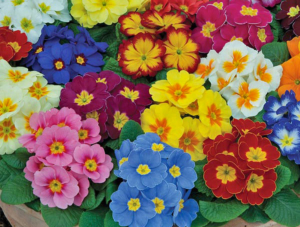 Primrose – an Annual |
Annuals
Their lifecycle is typically one year. And, they bloom consistently.
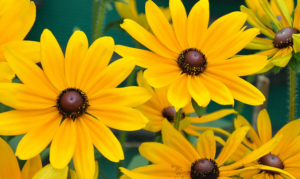 Black-eyed Susan’s – a Biennial |
Biennials
Typically they complete their lifecycle in two years.
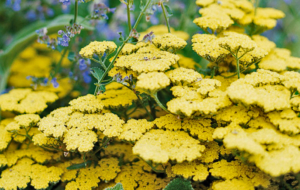 Yarrow – Sample Perennial |
Perennials
Plants that live for more than two years.
Horticulturalists categorize perennials as to woody or herbaceous.
A woody perennias are trees and shrubs.
Herbaceous perennials are non-woody plants that that flower during a specified time period and usually die back in the fall.
Their lifecycle will depend on plant type and their environment
How to Know When Your Plant Has Completed its Lifecycle
A simple answer is – it becomes unsightly.
Some plants that become woody and stop producing foliage should be removed.
There are some exceptions – or plants that can be revived.
Below are some examples of plants with a finite lifespan
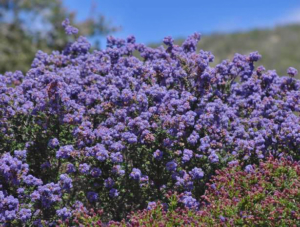 Ceanothus Julia Phelps |
|
Ceanothus has an average lifespan of ten years. At the very most – fifteen years. You can tell when it needs to be removed when the plant becomes sparse and it looks unsightly. Pruning regularly to remove older shoots will help extend their life.
|
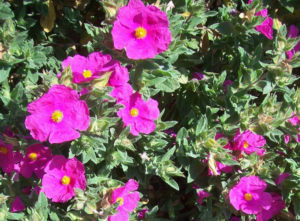 Cistus |
| Cistus’ lifespan is approximately ten years. You will know know when it is time to replace your Cistus (Rock Rose). Because it will become very woody and will produce less and less flowers. |
Below are some examples of Perennials with a longer lifespan
They can be rejuvendated with appropriate pruning
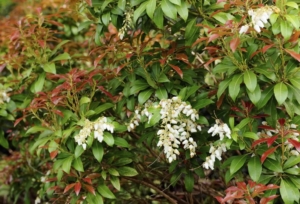 Photinia |
| Photinia is usually grown as a hedge for screening purposes. A moderate grower. Reaches maturity in about 12 years. They can live for fifty years – with good care. Pinch and lightly prune 4-5 /year for encourage density. One way of rejuenvating them is to cut back the entire shrub. Another way is to cut back in stages. |
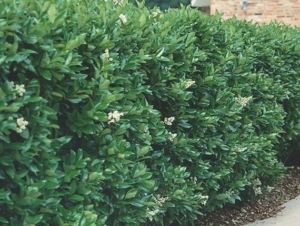 Privet |
|
Privets are grown as trees or heges for screening. They have a long lifespan. Some report 20-40 years. Fast growers, they are hardy and need regular pruning. Renovate by cutting entire plant down to 6 – 12 inches off the ground.
|
Planning to Optimize Your Plants’ Lifecycle
Know what to expect at every stage of their lifespan
The first five years
Jerry Goodspeed, a horticulturalist for Utah State University says that in the first five years of a landscape, plants grow and fill in their assigned area.
After ten years
Goodspeed says plants may become overgrown.
- Overcrowding may become a problem.
- You can tell if they are in decline when they appear leggy. Hard pruning can restore vigor on some.
- Start evaluating each plant on a case by case basis as some may need replacing.
- If your irrigation was installed at the same time as your plants were installed, you may be wasting water.
Manage Plant Growth
- Plants compete for nutrients, water and sunlight. Some do not survive.
- When trees mature its larger canopy may block sunlight from a neighboring plant making its removal necessary.
- Long term tree care. Routine pruning and fertilization are important for the health of your trees. They are an important part of your asset. With proper maintenance they will last for many years.
- For shrubs that are crowding another plant. A healthier fix than shearing is to selectively remove plants that are crowding each other.
*Mature woody Rosemary (Rosmarinus officinalis)
Unfortunately, this poor Rosmarinus should be replaced. One of our GGI resident experts, Paul Swanson says, “they do not respond well to hard pruning.” I can guarantee that given Paul’s thirty plus years of experience, that is the last word on it.
 Mature, woody Rosemary shrub – Detracts from look of a property. See prognosis at the bottom* |
How to know when you should replace your plants
How do your plants look? Are they attractive, healthy and vigorous? There are a few factors that deterrmine how they look.
- Your plant’s maturity. Are they in the beginning or end of their lifecycle?
- Are they planted in the right place? This will determine how well they thrive.
- Maintenance is important. But maintenance cannot compensate for plants that are past their prime or are planted in the wrong place. We have seen numerous examples of plants in the wrong place that, in spite of diligent management, will never thrive.
Knowing Your Plant’s Useful Lifecycle is the first step
With the right maintenance practices some plants can live for many years. Ten, twenty, thirty and long beyond that.
Others have a finite lifespan at which time they will need to be replaced.
Do you have a shrub that looks awful?
Woody? Has it stopped producing foliage? Like the rosemary depicted above? Can your plant can be saved with renovative pruning? Or is it time to replace it?
An ugly looking plant reflects badly on your property.
You will need to either rejuvenate or replace it.
Know which options your plants need depends on their type.
Don’t spend your valuable time resurrecting a dying plant when it is better to replace it with a plant or plants that enhance your property. Conversley, replacing mature plants cost money. Make sure you know whether your plants can be rejuvenated.
Be knowledgeable. Then plan.
Below are some examples of plants types and their expected lifespan.
 Primrose – an Annual |
Annuals
Their lifecycle is typically one year. And, they bloom consistently.
 Black-eyed Susan’s – a Biennial |
Biennials
Typically they complete their lifecycle in two years.
 Yarrow – Sample Perennial |
Perennials
Plants that live for more than two years.
Horticulturalists categorize perennials as to woody or herbaceous.
A woody perennias are trees and shrubs.
Herbaceous perennials are non-woody plants that that flower during a specified time period and usually die back in the fall.
Their lifecycle will depend on plant type and their environment
How to Know When Your Plant Has Completed its Lifecycle
A simple answer is – it becomes unsightly.
Some plants that become woody and stop producing foliage should be removed.
There are some exceptions – or plants that can be revived.
Below are some examples of plants with a finite lifespan
 Ceanothus Julia Phelps |
|
Ceanothus has an average lifespan of ten years. At the very most – fifteen years. You can tell when it needs to be removed when the plant becomes sparse and it looks unsightly. Pruning regularly to remove older shoots will help extend their life.
|
 Cistus |
| Cistus’ lifespan is approximately ten years. You will know know when it is time to replace your Cistus (Rock Rose). Because it will become very woody and will produce less and less flowers. |
Below are some examples of Perennials with a longer lifespan
They can be rejuvendated with appropriate pruning
 Photinia |
| Photinia is usually grown as a hedge for screening purposes. A moderate grower. Reaches maturity in about 12 years. They can live for fifty years – with good care. Pinch and lightly prune 4-5 /year for encourage density. One way of rejuenvating them is to cut back the entire shrub. Another way is to cut back in stages. |
 Privet |
|
Privets are grown as trees or heges for screening. They have a long lifespan. Some report 20-40 years. Fast growers, they are hardy and need regular pruning. Renovate by cutting entire plant down to 6 – 12 inches off the ground.
|
Planning to Optimize Your Plants’ Lifecycle
Know what to expect at every stage of their lifespan
The first five years
Jerry Goodspeed, a horticulturalist for Utah State University says that in the first five years of a landscape, plants grow and fill in their assigned area.
After ten years
Goodspeed says plants may become overgrown.
- Overcrowding may become a problem.
- You can tell if they are in decline when they appear leggy. Hard pruning can restore vigor on some.
- Start evaluating each plant on a case by case basis as some may need replacing.
- If your irrigation was installed at the same time as your plants were installed, you may be wasting water.
Manage Plant Growth
- Plants compete for nutrients, water and sunlight. Some do not survive.
- When trees mature its larger canopy may block sunlight from a neighboring plant making its removal necessary.
- Long term tree care. Routine pruning and fertilization are important for the health of your trees. They are an important part of your asset. With proper maintenance they will last for many years.
- For shrubs that are crowding another plant. A healthier fix than shearing is to selectively remove plants that are crowding each other.
*Mature woody Rosemary (Rosmarinus officinalis)
Unfortunately, this poor Rosmarinus should be replaced. One of our GGI resident experts, Paul Swanson says, “they do not respond well to hard pruning.” I can guarantee that given Paul’s thirty plus years of experience, that is the last word on it.
 Mature, woody Rosemary shrub – Detracts from look of a property. See prognosis at the bottom* |
How to know when you should replace your plants
How do your plants look? Are they attractive, healthy and vigorous? There are a few factors that determine how they look.
- Your plant’s maturity. Are they in the beginning or end of their life cycle?
- Are they planted in the right place? This will determine how well they thrive.
- Maintenance is important. But maintenance cannot compensate for plants that are past their prime or are planted in the wrong place. We have seen numerous examples of plants in the wrong place that, in spite of diligent management, will never thrive.
Knowing Your Plant’s Useful Lifecycle is the first step
With the right maintenance practices some plants can live for many years. Ten, twenty, thirty and long beyond that.
Others have a finite lifespan at which time they will need to be replaced.
Do you have a shrub that looks awful?
Woody? Has it stopped producing foliage? Like the rosemary depicted above? Can your plant can be saved with renovative pruning? Or is it time to replace it?
An ugly looking plant reflects badly on your property.
You will need to either rejuvenate or replace it.
Know which options your plants need depends on their type.
Don’t spend your valuable time resurrecting a dying plant when it is better to replace it with a plant or plants that enhance your property. Conversley, replacing mature plants cost money. Make sure you know whether your plants can be rejuvenated.
Be knowledgeable. Then plan.
Below are some examples of plants types and their expected lifespan.
 Primrose – an Annual |
Annuals
Their lifecycle is typically one year. And, they bloom consistently.
 Black-eyed Susan’s – a Biennial |
Biennials
Typically they complete their lifecycle in two years.
 Yarrow – Sample Perennial |
Perennials
Plants that live for more than two years.
Horticulturalists categorize perennials as to woody or herbaceous.
A woody perennias are trees and shrubs.
Herbaceous perennials are non-woody plants that that flower during a specified time period and usually die back in the fall.
Their lifecycle will depend on plant type and their environment
How to Know When Your Plant Has Completed its Lifecycle
A simple answer is – it becomes unsightly.
Some plants that become woody and stop producing foliage should be removed.
There are some exceptions – or plants that can be revived.
Below are some examples of plants with a finite lifespan
 Ceanothus Julia Phelps |
|
Ceanothus has an average lifespan of ten years. At the very most – fifteen years. You can tell when it needs to be removed when the plant becomes sparse and it looks unsightly. Pruning regularly to remove older shoots will help extend their life.
|
[caption id="attachment_3073" align="alignleft" width="300"] Cistus Cistus
|
| Cistus’ lifespan is approximately ten years. You will know know when it is time to replace your Cistus (Rock Rose). Because it will become very woody and will produce less and less flowers. |
Below are some examples of Perennials with a longer lifespan
They can be rejuvendated with appropriate pruning
 Photinia |
| Photinia is usually grown as a hedge for screening purposes. A moderate grower. Reaches maturity in about 12 years. They can live for fifty years – with good care. Pinch and lightly prune 4-5 /year for encourage density. One way of rejuenvating them is to cut back the entire shrub. Another way is to cut back in stages. |
 Privet |
|
Privets are grown as trees or heges for screening. They have a long lifespan. Some report 20-40 years. Fast growers, they are hardy and need regular pruning. Renovate by cutting entire plant down to 6 – 12 inches off the ground.
|
Planning to Optimize Your Plants’ Lifecycle
Know what to expect at every stage of their lifespan
The first five years
Jerry Goodspeed, a rejuvenated for Utah State University says that in the first five years of a landscape, plants grow and fill in their assigned area.
After ten years
Goodspeed says plants may become overgrown.
- Overcrowding may become a problem.
- You can tell if they are in decline when they appear leggy. Hard pruning can restore vigor on some.
- Start evaluating each plant on a case by case basis as some may need replacing.
- If your irrigation was installed at the same time as your plants were installed, you may be wasting water.
Manage Plant Growth
- Plants compete for nutrients, water and sunlight. Some do not survive.
- When trees mature its larger canopy may block sunlight from a neighboring plant making its removal necessary.
- Long term tree care. Routine pruning and fertilization are important for the health of your trees. They are an important part of your asset. With proper maintenance they will last for many years.
- For shrubs that are crowding another plant. A healthier fix than shearing is to selectively remove plants that are crowding each other.
*Mature woody Rosemary (Rosmarinus officinalis)
Unfortunately, this poor Rosmarinus should be replaced. One of our GGI resident experts, Paul Swanson says, “they do not respond well to hard pruning.” I can guarantee that given Paul’s thirty plus years of experience, that is the last word on it.
 Mature, woody Rosemary shrub – Detracts from look of a property. See prognosis at the bottom* |
How to know when you should replace your plants
How do your plants look? Are they attractive, healthy and vigorous? There are a few factors that deterrmine how they look.
- Your plant’s maturity. Are they in the beginning or end of their lifecycle?
- Are they planted in the right place? This will determine how well they thrive.
- Maintenance is important. But maintenance cannot compensate for plants that are past their prime or are planted in the wrong place. We have seen numerous examples of plants in the wrong place that, in spite of diligent management, will never thrive.
Knowing Your Plant’s Useful Lifecycle is the first step
With the right maintenance practices some plants can live for many years. Ten, twenty, thirty and long beyond that.
Others have a finite lifespan at which time they will need to be replaced.
Do you have a shrub that looks awful?
Woody? Has it stopped producing foliage? Like the rosemary depicted above? Can your plant can be saved with renovative pruning? Or is it time to replace it?
An ugly looking plant reflects badly on your property.
You will need to either rejuvenate or replace it.
Know which options your plants need depends on their type.
Don’t spend your valuable time resurrecting a dying plant when it is better to replace it with a plant or plants that enhance your property. Conversley, replacing mature plants cost money. Make sure you know whether your plants can be rejuvenated.
Be knowledgeable. Then plan.
Below are some examples of plants types and their expected lifespan.
 Primrose – an Annual |
Annuals
Their lifecycle is typically one year. And, they bloom consistently.
 Black-eyed Susan’s – a Biennial |
Biennials
Typically they complete their lifecycle in two years.
 Yarrow – Sample Perennial |
Perennials
Plants that live for more than two years.
Horticulturalists categorize perennials as to woody or herbaceous.
A woody perennias are trees and shrubs.
Herbaceous perennials are non-woody plants that that flower during a specified time period and usually die back in the fall.
Their lifecycle will depend on plant type and their environment
How to Know When Your Plant Has Completed its Lifecycle
A simple answer is – it becomes unsightly.
Some plants that become woody and stop producing foliage should be removed.
There are some exceptions – or plants that can be revived.
Below are some examples of plants with a finite lifespan
 Ceanothus Julia Phelps |
|
Ceanothus has an average lifespan of ten years. At the very most – fifteen years. You can tell when it needs to be removed when the plant becomes sparse and it looks unsightly. Pruning regularly to remove older shoots will help extend their life.
|
 Cistus |
| Cistus’ lifespan is approximately ten years. You will know know when it is time to replace your Cistus (Rock Rose). Because it will become very woody and will produce less and less flowers. |
Below are some examples of Perennials with a longer lifespan
They can be rejuvendated with appropriate pruning
 Photinia |
| Photinia is usually grown as a hedge for screening purposes. A moderate grower. Reaches maturity in about 12 years. They can live for fifty years – with good care. Pinch and lightly prune 4-5 /year for encourage density. One way of rejuenvating them is to cut back the entire shrub. Another way is to cut back in stages. |
 Privet |
|
Privets are grown as trees or heges for screening. They have a long lifespan. Some report 20-40 years. Fast growers, they are hardy and need regular pruning. Renovate by cutting entire plant down to 6 – 12 inches off the ground.
|
Planning to Optimize Your Plants’ Lifecycle
Know what to expect at every stage of their lifespan
The first five years
Jerry Goodspeed, a horticulturalist for Utah State University says that in the first five years of a landscape, plants grow and fill in their assigned area.
After ten years
Goodspeed says plants may become overgrown.
- Overcrowding may become a problem.
- You can tell if they are in decline when they appear leggy. Hard pruning can restore vigor on some.
- Start evaluating each plant on a case by case basis as some may need replacing.
- If your irrigation was installed at the same time as your plants were installed, you may be wasting water.
Manage Plant Growth
- Plants compete for nutrients, water and sunlight. Some do not survive.
- When trees mature its larger canopy may block sunlight from a neighboring plant making its removal necessary.
- Long term tree care. Routine pruning and fertilization are important for the health of your trees. They are an important part of your asset. With proper maintenance they will last for many years.
- For shrubs that are crowding another plant. A healthier fix than shearing is to selectively remove plants that are crowding each other.
*Mature woody Rosemary (Rosmarinus officinalis)
Unfortunately, this poor Rosmarinus should be replaced. One of our GGI resident experts, Paul Swanson says, “they do not respond well to hard pruning.” I can guarantee that given Paul’s thirty plus years of experience, that is the last word on it.

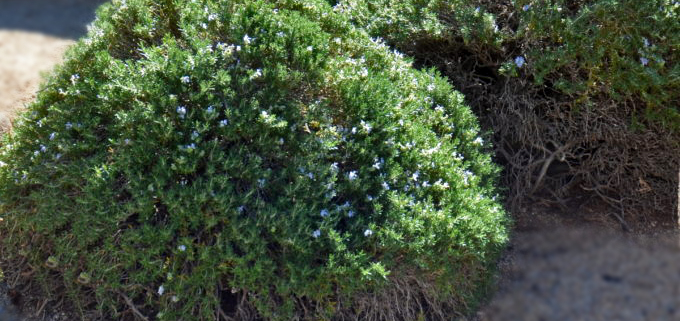

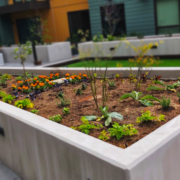
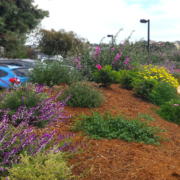
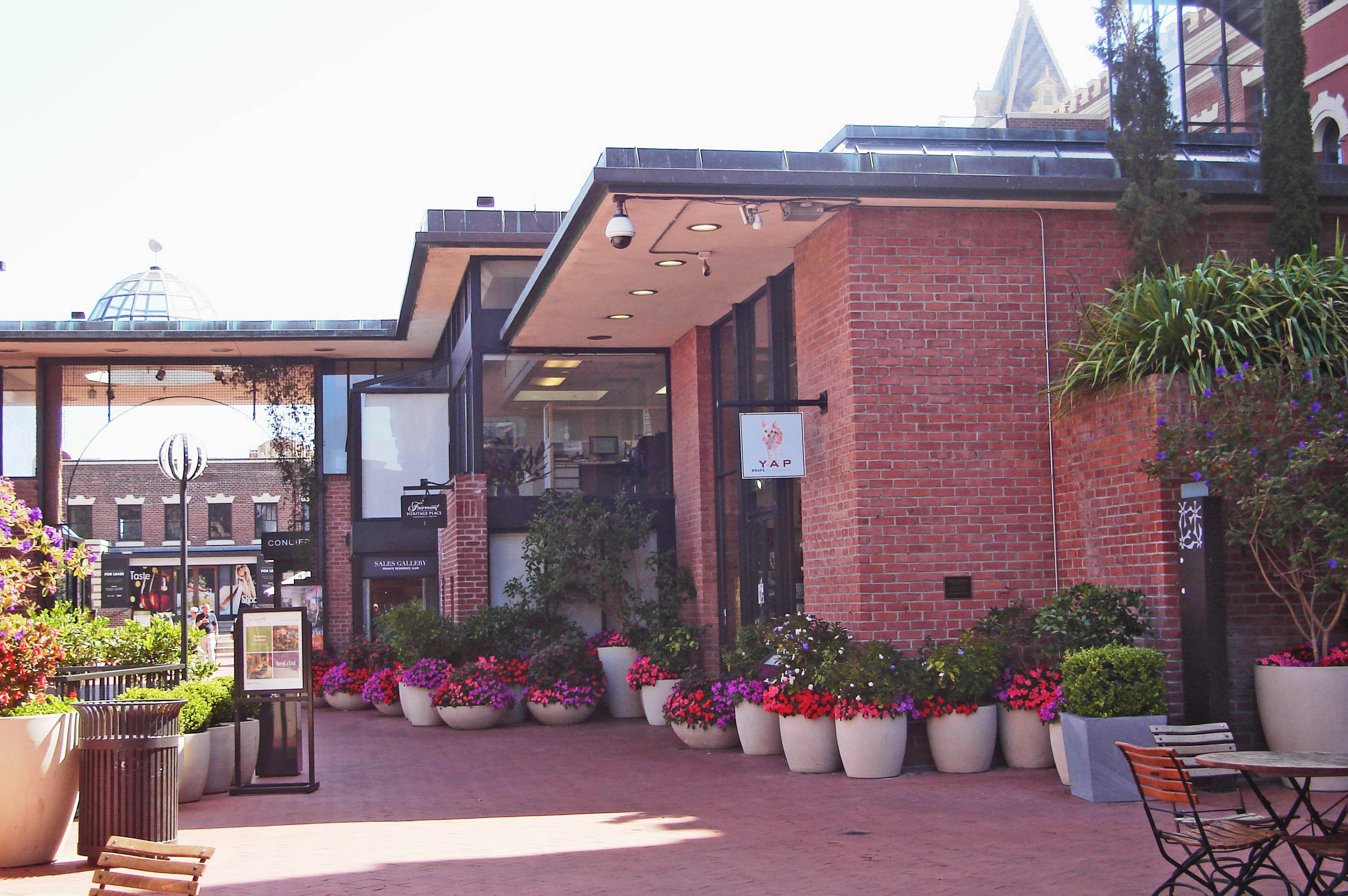
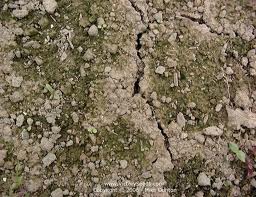


Leave a Reply
Want to join the discussion?Feel free to contribute!